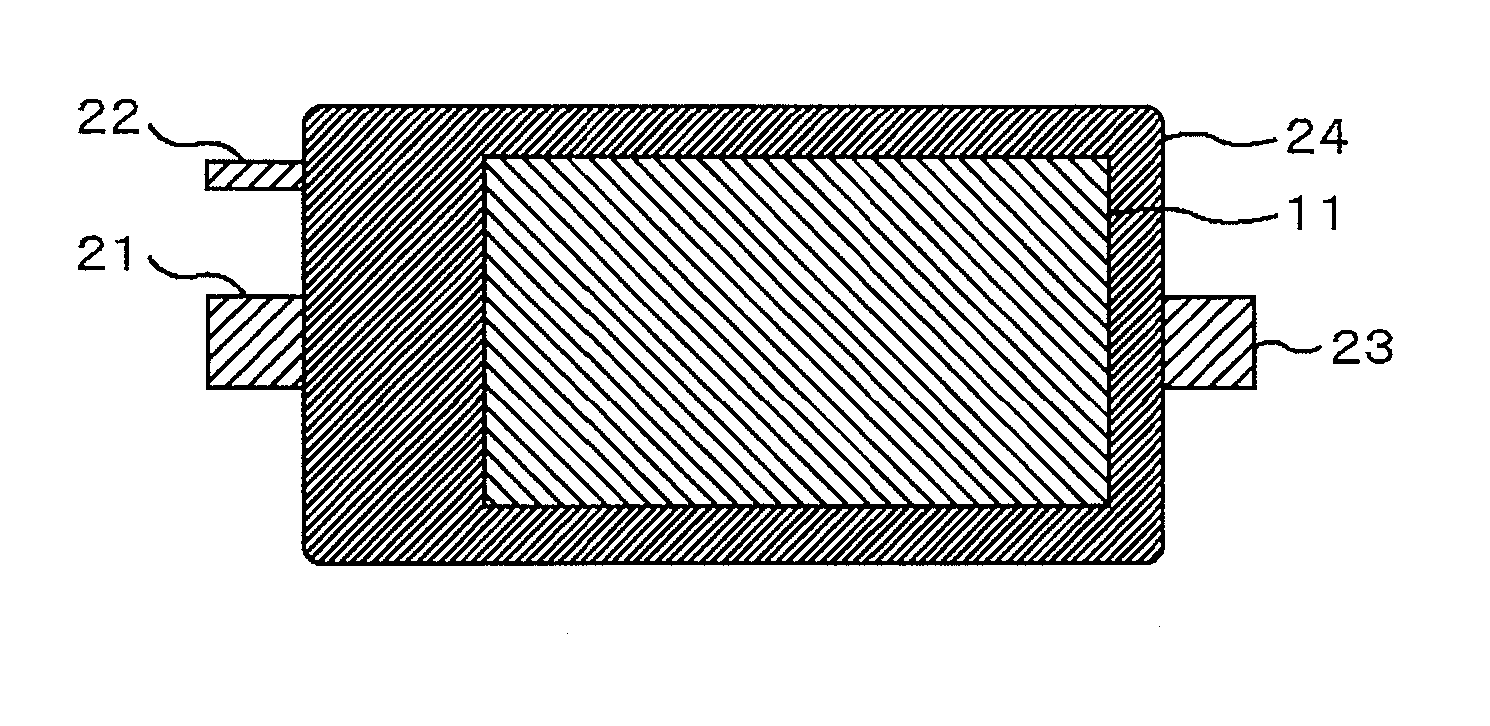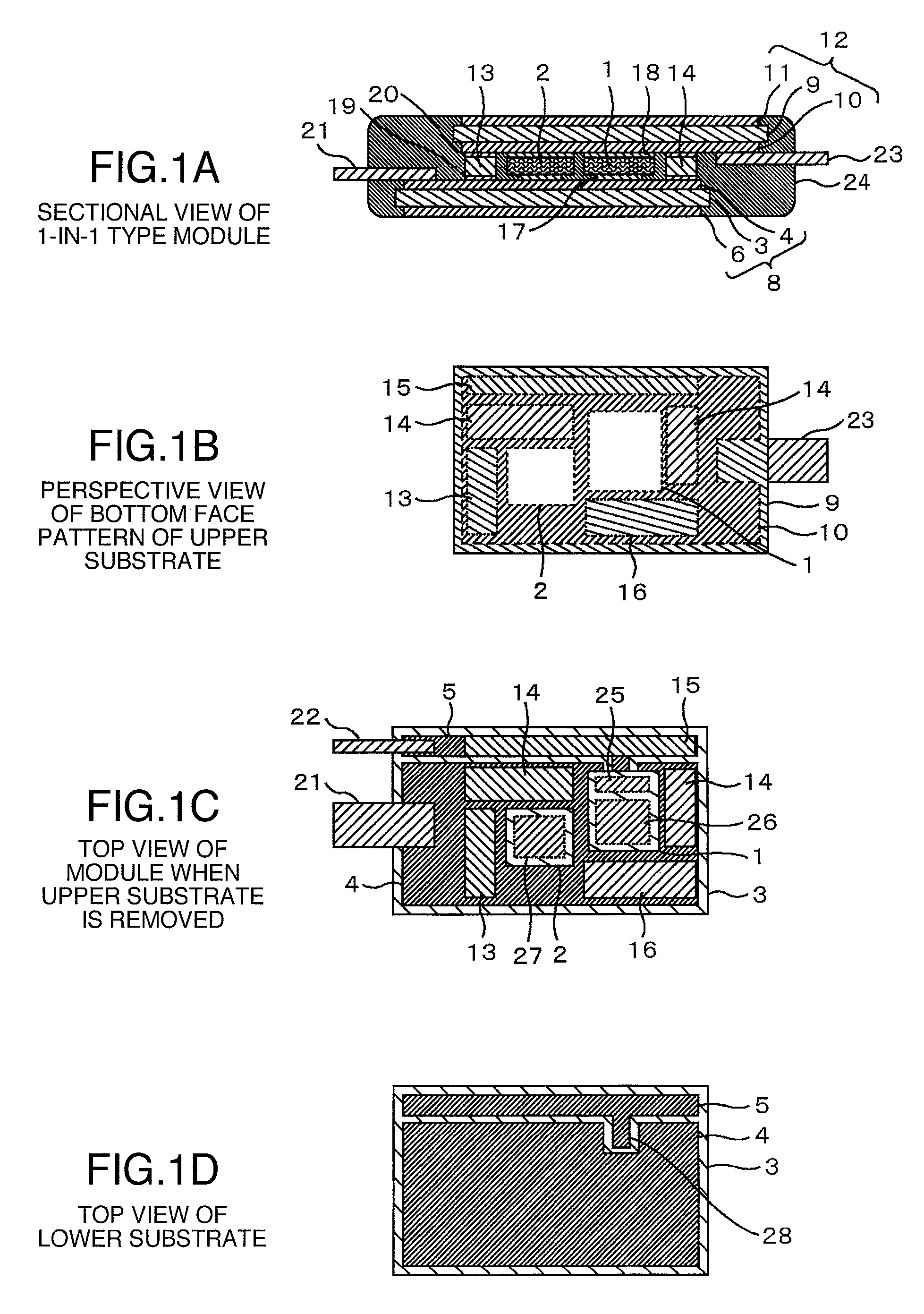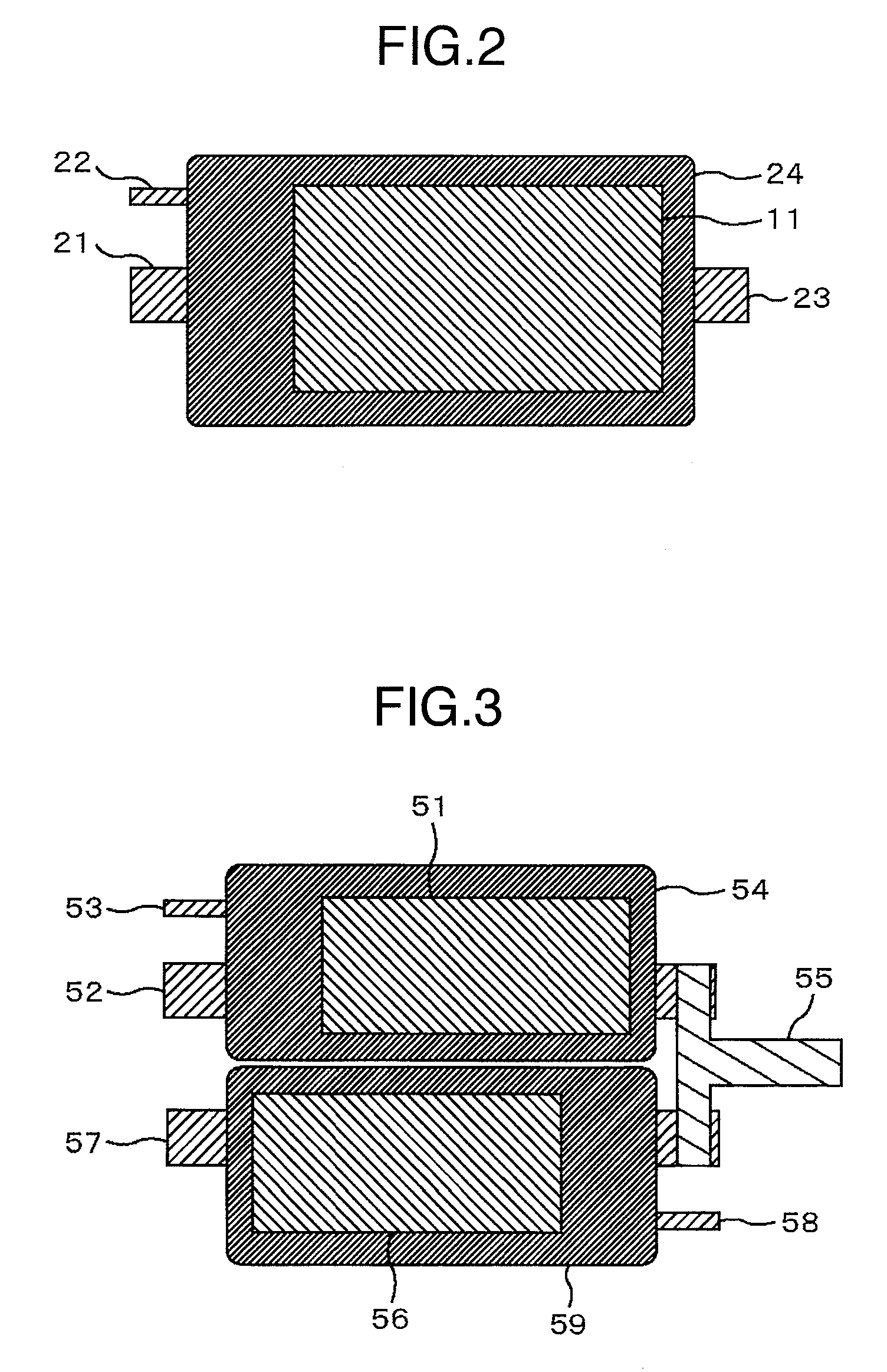Power Semiconductor Module
a technology of semiconductor modules and semiconductor components, applied in the direction of printed circuit manufacturing, printed circuit aspects, laminated printed circuit boards, etc., can solve the problems of device damage or device characteristics degradation, difficulty in making the coefficient of thermal expansion of materials above and below the device equal, and fracture of the joining part, so as to prevent the fracture of the joining parts, reduce the possibility of device damage, and reduce the effect of pressur
- Summary
- Abstract
- Description
- Claims
- Application Information
AI Technical Summary
Benefits of technology
Problems solved by technology
Method used
Image
Examples
Embodiment Construction
[0025]Hereafter, embodiments of the present invention will be described in detail with reference to the drawings.
[0026]FIGS. 1A-1D show an embodiment of a power semiconductor module according to the present invention including one power transistor device and one diode device. FIG. 1A is a sectional view of the module. FIG. 1B is a perspective view of a metal electrode of a device side face on an upper ceramic substrate with printed circuit. FIG. 1C is a top view obtained when an upper substrate with printed circuit and resin are removed. FIG. 1D is a top view of a lower substrate with printed circuit. In FIGS. 1A-1D, an IGBT chip 1 and a diode chip 2 are joined onto a ceramic substrate with printed circuit 8 having metal electrodes 4, 5 and 6 of Cu formed above and below a low thermal expansion ceramic substrate 3 with printed circuit, by high temperature solder 17 having a temperature at solidus line of at least 260° C. formed of SnSbAgCu. Electroless Ni—P plating having a thicknes...
PUM
| Property | Measurement | Unit |
|---|---|---|
| melting point | aaaaa | aaaaa |
| temperature | aaaaa | aaaaa |
| thickness | aaaaa | aaaaa |
Abstract
Description
Claims
Application Information
 Login to View More
Login to View More - R&D
- Intellectual Property
- Life Sciences
- Materials
- Tech Scout
- Unparalleled Data Quality
- Higher Quality Content
- 60% Fewer Hallucinations
Browse by: Latest US Patents, China's latest patents, Technical Efficacy Thesaurus, Application Domain, Technology Topic, Popular Technical Reports.
© 2025 PatSnap. All rights reserved.Legal|Privacy policy|Modern Slavery Act Transparency Statement|Sitemap|About US| Contact US: help@patsnap.com



